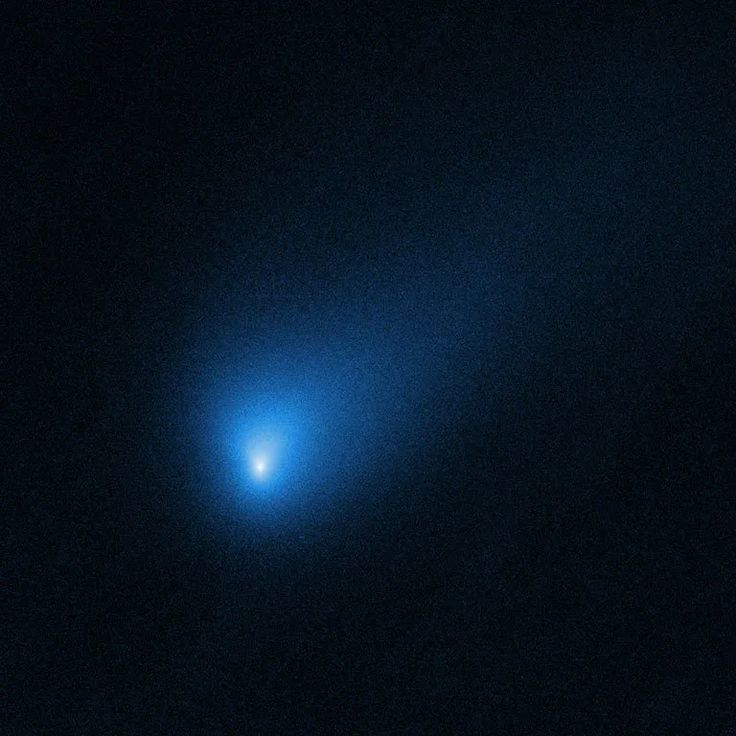Scientists Believe Something Big May Have Altered the Solar System’s Planetary Order
Scientists propose that a massive interstellar object, possibly fifty times the mass of Jupiter, may have passed through our solar system billions of years ago. This cosmic intruder could have dramatically disrupted planetary orbits, reshaping the solar system’s structure.
Summary
- The solar system is organized due to the Sun’s gravitational pull, with planets moving in the same direction and on the same plane.
- Certain orbital anomalies in the solar system suggest an event disrupted this balance.
- A recent study hypothesizes an interstellar object, 2-50 times the mass of Jupiter, may have flown within 20 astronomical units of the Sun, altering planetary positions.
- This theory supports planetary migrations, where planets like Uranus and Neptune moved from their original orbits closer to the Sun.
- Previously, planetary migrations were attributed to gravitational interactions between planets and the protoplanetary disk.
- Gas giants like Jupiter, Saturn, Uranus, and Neptune exhibit eccentric orbits that existing theories struggle to fully explain.
- Researchers used computer simulations to model how such a massive intruder could influence planetary arrangements.
- The probability of such an interstellar flyby happening is approximately 1 in 100.
- The mystery object could have been a rogue gas giant ejected from another star system.
- If true, this event would underscore the vulnerability of even stable star systems to external cosmic influences.
- Observational evidence and future studies may help verify this theory.
- Similar anomalies have been observed in other star systems, hinting at a common cosmic phenomenon.
- Gravitational forces from interstellar objects can not only disrupt orbits but also eject planets entirely from their systems.
- This study provides an alternative explanation for the current arrangement of our solar system’s gas giants.
- Interstellar visitors could be more common than previously thought, emphasizing the dynamic and chaotic nature of space.

Disorder of the Day
The Sun, often referred to as a benevolent dictator, has maintained the solar system’s order for billions of years. Its gravitational pull ensures the planets revolve on the same plane and in the same direction. Yet, subtle anomalies in this cosmic choreography suggest that something significant may have disrupted this balance billions of years ago.
Recent studies suggest an enormous interstellar object, potentially up to fifty times the mass of Jupiter, may have invaded our solar system. This visitor could have stirred up planetary orbits, leaving behind the irregularities we observe today.
“The solar system may be a product not just of internal forces but also of a dramatic encounter with an external invader,” says a researcher involved in the study.
This hypothesis aligns with other theories proposing that interstellar flybys have influenced orbital patterns in various star systems.
The Protoplanetary Disk and Planetary Formation
Around 4.6 billion years ago, the solar system emerged from a rotating cloud of gas and dust known as the protoplanetary disk. This disk’s influence explains why planets are generally coplanar and move in the same direction. However, as the planets formed, their positions shifted.
Astronomers refer to this as planetary migrations, which account for how planets like Uranus and Neptune moved farther from the Sun. Smaller planetary bodies were often ejected from the system entirely.
Space Invader Hypothesis
The study suggests that an interstellar object, between 2-50 times the mass of Jupiter, might have flown within 20 astronomical units of the Sun. This close encounter could have disturbed the orbits of the gas giants, leading to the eccentricities observed today.
The computer simulations conducted indicate a 1 in 100 chance of such an event occurring. While seemingly low, these are relatively high odds in the realm of astronomy.
Table 1: Key Characteristics of Planetary Migrations
| Phenomenon | Description |
|---|---|
| Gravitational Interactions | Planets push and pull each other, causing orbital shifts. |
| Protoplanetary Disk | The disk of gas and dust around the Sun influences the movement of forming planets. |
| Interstellar Flyby | A massive object from another star system disturbs planetary orbits. |
What Was This Cosmic Intruder?
The mysterious object could have been a rogue gas giant, ejected from another star system. Such objects are common in the galaxy, traveling vast distances through interstellar space. If this theory holds, it would mean our solar system was directly impacted by one of these wanderers.
Implications of the Hypothesis
If validated, the interstellar object theory would rewrite our understanding of planetary formation and stability. It suggests that even star systems as stable as ours are vulnerable to external disruptions.
Astronomers also believe that similar events might occur in other star systems, emphasizing the chaotic nature of the universe.
Table 2: Possible Outcomes of Interstellar Flybys
| Outcome | Explanation |
|---|---|
| Orbital Eccentricities | Planets adopt irregular, elongated orbits. |
| Planetary Ejections | Smaller planets or debris may be flung out of the solar system entirely. |
| Altered Planetary Layout | Gas giants and terrestrial planets shift from their original positions. |
Fun Facts
- A rogue planet traveling through space can take millions of years to reach another star system.
- Interstellar flybys may also leave behind traces in the form of cometary debris.
- Planetary migrations were first proposed to explain Neptune’s unexpected position.






